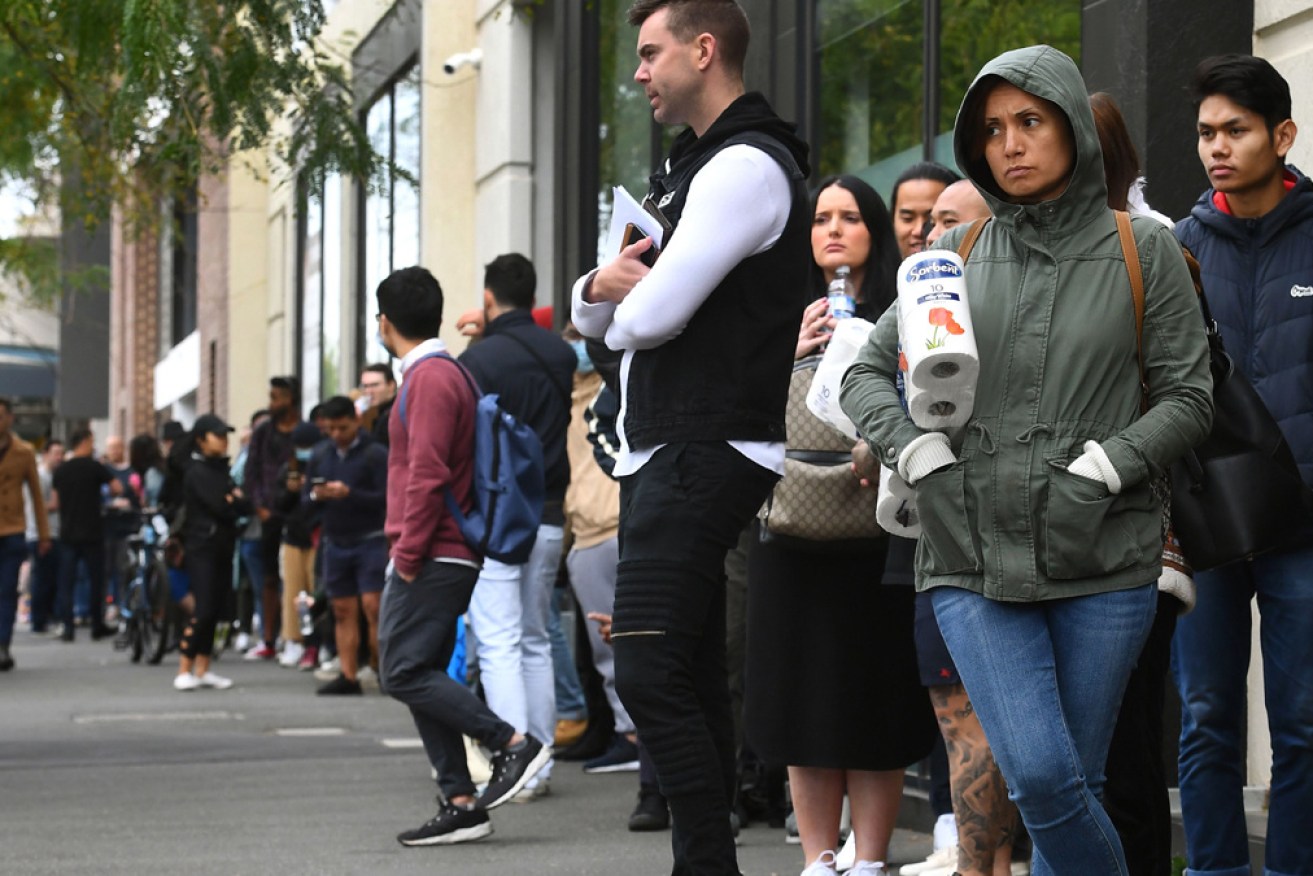Job ads plunge 53 per cent as economic crisis deepens


Unemployment queues are growing fast and business is asking for help. Photo: AAP
The economic climate just got a whole lot darker with the number of job ads falling by a shocking 53.1 per cent in April as coronavirus layoffs swept the economy.
At the same time, almost three-quarters of businesses have said they expect to lose turnover over the next two months.
“What we are seeing looks unbelievable,” said Stephen Koukoulas, managing director of Market Economics and a former adviser to the Gillard government.
ANZ’s job ads series dived at record speed in April, with the 53.1 per cent fall almost five times the previous record of 11.3 per cent in January 2009, amid the global financial crisis.
They are now down 62.2 per cent year on year.
ANZ found that “job ads fell progressively over the month, adding to the evidence that the downturn in activity is impacting businesses and the labour market at an unprecedented speed”.
The latest COVID-19 business survey from the Australian Bureau of Statistics built on that negative picture, showing that 72 per cent of businesses expected turnover to fall over the next two months.
The ABS found that reduced demand for goods and services was expected to affect 69 per cent of businesses over that time frame, while 41 per cent expected reduced capacity to pay operating expenses.
Cash flow is drying
Deloitte Access Economics partner Nicki Hutley said the ABS figures showed a significant decline from March.
“This time, 72 per cent of businesses reported reduced cash flow compared to 64 per cent last time,” she said.
Of businesses reporting constraints on spending, “41 per cent have less capacity to pay operating expenses while 24 per cent were having problems accessing credit and funds,” Ms Hutley said.
“That is worrying.”
The outlook for business investment was also poor, with “73 per cent of businesses reporting no intention to make capital expenditure, 15 per cent revising their spending plans downward [during the March quarter] and only 8 per cent revising capex upwards,” she said.
Businesses are also reaching out to government for a hand-up, with 61 per cent having registered or intending to register for the JobKeeper payment scheme.
Of those businesses, 73 per cent expect more than half their employees to be eligible for payments.
Late last week, more than 500,000 businesses covering three million workers had signed up for JobKeeper, according to Assistant Treasurer Michael Sukkar.
Limited options
“What else can you do? It’s a shocking outcome, but JobKeeper will help people keep connected to their employer,” Ms Hutley said.
“The speed of recovery is important because the longer we’re out, the harder it is to come back.”
There was a small glimmer of good news: Only 7 per cent of businesses who did not register for JobKeeper said the decision was driven by insufficient funds to pay staff before JobKeeper kicked in this week.

61 per cent of businesses want to use JobKeeper to support their workers. Photo: Getty
Meanwhile, a separate ABS survey on Friday found that one in three households were financially worse off as a result of the coronavirus, while 10 per cent had drawn on their savings.
There was also a small fall in the number of households able to raise $2000 in an emergency, with 81 per cent saying they could do so, compared to 84 per cent back in 2014.
Mr Koukoulas said the economy “appeared to be negotiating the low point with job ads falling so much”.
“When we see the figures for the March quarter GDP, we might actually see that the March quarter held up due to retail and stimulus spending,” he said.
“The June quarter will be a shock, with GDP likely to fall by 5 or 10 per cent and unemployment being around 10 per cent.
“You’d like to think that would be the last set of really bad figures [if the virus starts to subside]. Each relaxation of things would help the economy a little.”
Although NAB’s business confidence figures and CBA’s Purchasing Managers Index [PMI] had been weaker, “there were a couple of figures from China, like the PMI, which were OK,” Mr Koukoulas said.
Resource prices are holding up as a result, which is good news for the government’s royalty income.
“The iron ore price is still $80 a tonne,” Mr Koukoulas said.









